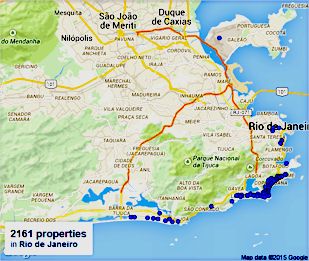» BRAZIL • Discover Brazil • Southeast Brazil • Rio de Janeiro
Discover Magical Rio de Janeiro
Rio de Janeiro is famous for its natural settings, its Carnival celebrations, samba and other music, and hotel-lined tourist beaches, such as Copacabana and Ipanema, paved with decorated black and cream swirl pattern mosaics known locally as 'pedra portuguesa'.
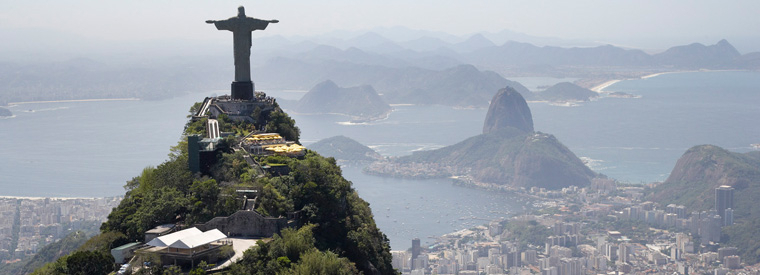
A | B | C | D | E | F | G | H | I | J | K | L | M | N | O | P | Q | R | S | T | U | V | W | X | Y | Z
» National Fine Arts Museum

Set in an impressive neoclassical building in downtown Rio de Janeiro that harkens back to an era when the city was a national - and imperial - capital, the National Fine Arts Museum (Museu Nacional de Belas Artes) houses over 16,000 artworks created by Brazilian painters, sculptors, and other visual artists. Focused mainly on artists from the 19th century, including Brazilian-born but French-trained painter Victor Meirelles de Lima and painter-turned-educator Pedro Américo, the museum also features works imported from Europe …
» National Library
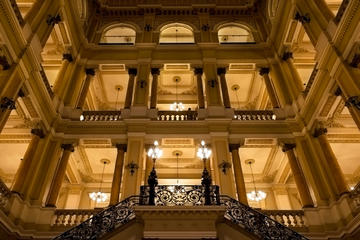
Holding over 9 million volumes within its stacks and archives, Brazil's extensive National Library (Biblioteca Nacional) is the largest library in Latin America and remains one of the first institutions established during Rio's reign as imperial capital of the United Kingdom of Portugal, Brazil, and the Algarves. Founded in 1810 and relocated to its current handsome Greek Revival-style setting in 1910, the library has maintained an archive of the country's most important publications …
» Niteroi
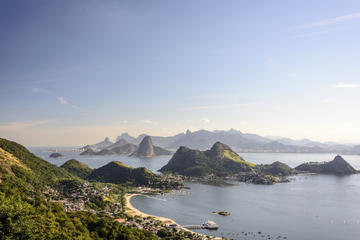
Nicknamed 'The Smile City,' Niteroi is home to nearly 500,000 people and just a ferry ride away from the hustle and bustle of Rio. And while the soon-to-be-home of the summer Olympics definitely has a draw, travelers agree the charm of Niteroi sends plenty of visitors across the waters to its much more scenic shores. In addition to exploring some of the country's most secluded (and beautiful) beaches, travelers can wander the halls of Nitero's Museum of Contemporary Art or take in a show at Teatro Popular …
» Niteroi Contemporary Art Museum (MAC)
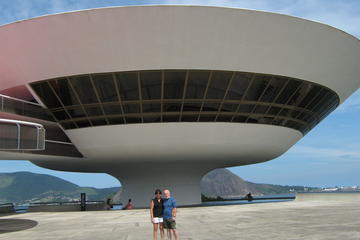
Built in 1996, the Niteroi Contemporary Art Museum is one of the city's most iconic structures. Its modern swirling architecture differs dramatically from New York City's Guggenheim, but still offers a nod to a similar creative design. In addition to its stunning exterior, the Niteroi is home to a wide variety of stunning works of art, too. From sculptures to paintings, creative travelers are treated to an incredible array of visual art. And while the museum's permanent collection is one of the best in the country …
» Paco Imperial
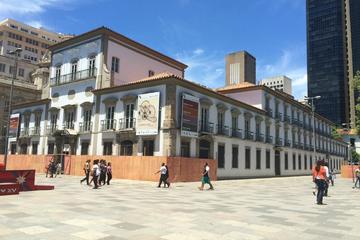
This former governor's home was built in 1743 and later served as the residence of the famed Dom Joao. And while this famed Portuguese palace is renowned for its important place in both national and colonial history (the Freedom from Slavery Act was introduced on Paco Imperial's steps), today it is better known for hosting concerts, movies and other cultural events. Paco Imperial is registered as an architectural treasure by the National Artistic and Historical Heritage Institute …
» Parque Lage
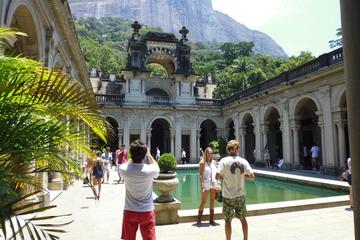
Those who have already been enchanted by the Jardim Bôtanico, but are looking for a less popular venue, will find a tranquil paradise at Parque Lage. The small park at the foot of Corcovado Mountain was once the residence of the rich industrialist Enrique Large and his wife, the singer Gabriella Besanzoni. Surrounded by monkeys and birds hopping from branch to branch in the Atlantic rain forest, the park resembles an oasis and it is easy to see why the couple decided to settle down here …
» Pedra Bonita
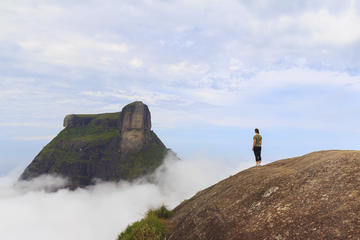
Many of the colorful hang gliders soaring over the city of Rio de Janeiro launch from the top of Pedra Bonita, a granite peak located within Tijuca National Park. From an elevation of 2,283 feet (696 meters), the views are stellar even for visitors who choose to forgo the hang gliding. Unlike some of Rio's other peaks, Pedra Bonita has an easy trail to the top. A mile-long (1.5-kilometer) trail climbs steadily toward the peak, and while there's a significant elevation change along the way …
» Pedra da Gavea
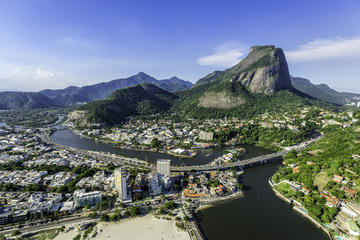
When Portuguese sailors entered Guanabara Bay in January 1502, they spotted Pedra da Gavea and thought its shape resembled a topsail of a ship, giving the now famous mountain its name. The granite peak rises 2,769 feet (844 meters) above sea level and plummets almost directly down toward the sea. Under the administration of Tijuca National Park, Pedra da Gavea has a challenging but well-marked hiking trail to the top, where the views rival those from Sugarloaf and Corcovado …
» Pepino Beach
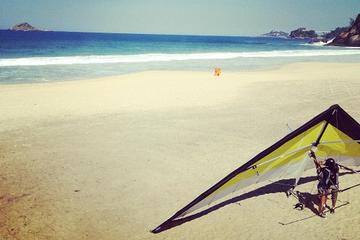
Located on the southwest end of Sao Conrado Beach, Pepino Beach rounds into a picturesque cove, with lush vegetation and the granite mountains of Pedra da Gavea and Pedra Bonita rising behind it. But besides being a lovely strip of sand, Pepino Beach is most commonly known as the landing spot for Rio's hang-gliders and paragliders. Adrenaline-seekers jump from a platform atop Pedra Bonita before gracefully landing at Pepino Beach, and those interested in watching these daredevils in flight …
» Petropolis
Petropolis was the mountain getaway for the imperial court, popular in summer when the coast became hot and muggy. Nestled 3,000ft (800m) high in the Serra dos Órgãos it is a few degrees cooler than at sea level. It's a kooky place as the rainforest is filled with European alpine architecture and the gorgeous Museu Imperial would not be out of place in Austria. Other buildings of note include the cathedral, which offers excellent views from the steps and the glasshouse (Palacio Cristal) …
» Plataforma
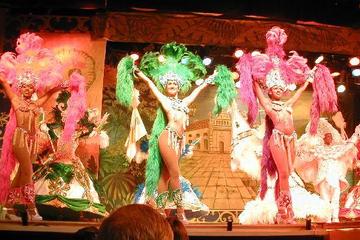
It might not be Carnaval time in Rio but it is always Carnaval time at Platforma. This lively Brazilian restaurant is where to get your fix of razzle and dazzle all year round. The colorful show tells the story of Brazil's history (with Portuguese, Indian and African influences) through song and dance (including samba), with a highlight being the Brazilian drums. The finale involves a sparkling parade of outfits reflecting the yellow, blue, green and white of the Brazilian flag. The show is family friendly …
» Praca Quinze
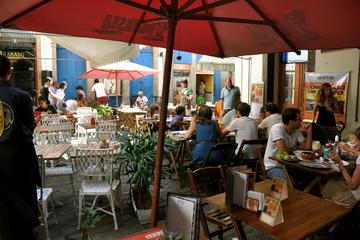
Standing in the center of Praca Quinze is a way to literally and symbolically stand at the center of Brazilian history. It was here that Brazil declared itself a republic in 1822, and here that Pedro and Pedro II were coronated as emperors. It's where slavery was abolished in modern Brazil, and where Carmelite convents and churches were erected as far back as 1590. It's the heart of the city's historic district, and when the city was only accessible by boat, was the first place that travelers would see the moment they stepped foot in Rio …
» Praia Vermelha

Praia Vermelha is one of Rio's smallest beaches but also one of the most scenic. Tucked inside a protective cove that keeps the waves at bay, the beach is covered in coarse sand with a slightly reddish hue. Flanked by the spires of Morro da Urca and Morro da Babilonia, Vermelha Beach offers ground level views looking up at Sugarloaf Mountain. To reach the top of the iconic peak, ride the cable car from Vermelha Beach to the top of Morro da Urca, before transferring over to a second car to the top of Sugarloaf Mountain …
» Prainha Beach

Prainha Beach, one of Rio's best kept secrets, consists of a secluded bay, forested hills and beach restaurants with fresh fish and seafood on the menu. Located on the westernmost tip of the Barra da Tijuca district, Prainha Beach is part of a protected rain forest area and boasts 700 meters of sandy white beach. But despite being a lot less crowded than the more famous stretches of sand within the city and having a reputation for being almost deserted on weekdays, Prainha Beach can get busy on weekends as well …
» Recreio dos Bandeirantes Beach

Located in the far west of Rio, Recreio dos Bandeirantes is a beach seldom visited by tourists. The waterfront area houses a quiet, upper-middle class neighborhood that bears the same name and is most commonly referred to as just 'Recreio.' Although the 12+-mile (20-km) stretch of sand from Barra da Tijuca to Reserva Beach to Recreio Beach is uninterrupted, the part that is officially considered Recreio Beach begins just southwest of Reserva and northeast of Pontal Rock (Pedra do Pontal) …
» Rio de Janeiro Cathedral
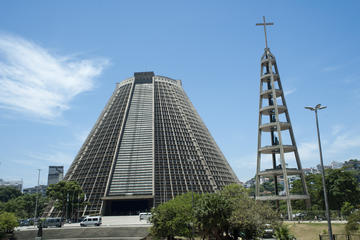
Far from a typical church, the Rio de Janeiro Cathedral is a tall, cone-shaped building that's distinctive to the downtown Rio skyline. The unusual design was inspired by the Mayan pyramids and was built in the '60s and '70s by architect Edgar Fonseca. One of the most important contemporary religious structures in Rio, the cathedral is dedicated to St Sebastian, the patron saint of the city, and has received three papal visits. Standing at 315 feet (96 meters), the hollow interior is undeniably the most impressive part of the building …
» Rio de Janeiro Cruise Port
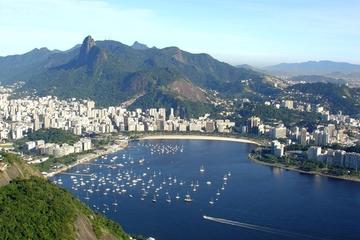
Already known as one of the world's most vibrant cities, Rio de Janeiro will likely see its popularity continue to soar as it hosts the 2014 World Cup and the 2016 Summer Olympics. A city of six million people, Rio is glittering, vibrant and sexy and is sure to dazzle most first-time visitors. The official language in Brazil is Portuguese, but Spanish may also be spoken. English should be understood in hotels and shops. The local currency is the Brazilian real, but US dollars are widely accepted (change will be given in reales) …
» Rio Niteroi Bridge

Connecting the distant shores of Guanabara Bay - the wide expanse of water bordering Rio to the east that the first Portuguese explorers in Brazil assumed to be the mouth of a river one sunny New Year's Day just over five centuries ago - the Rio Niteroi Bridge remains one of the country's engineering marvels. First conceived in 1875 and finally opened 99 years later, the 8.25-mile-long bridge carries an average of 140,000 vehicles a day between Rio and the city of Niteroi …
» Rio Scenarium
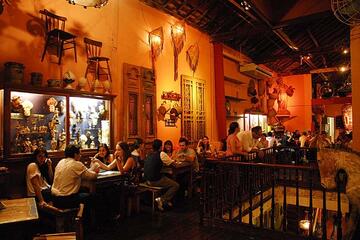
Credited with kick-starting the now-legendary music scene of Rio's Lapa district, the world renowned Rio Scenarium is one of the city's most popular venues, drawing a varied crowd of both locals and tourists. Celebrated for showcasing some of the best samba, forró and gafieira music, the spacious venue, located just a short stroll from the landmark Lapa Arches, regularly hosts beloved local acts like Lunar Orchestra and the Henrique Band, as well as a range of upcoming bands and genres …
» Rocinha
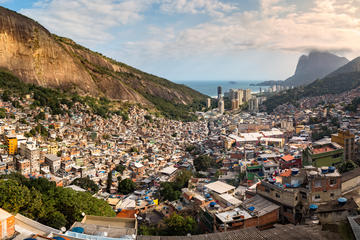
A city within a city, Rocinha is Rio de Janeiro's largest and most densely populated urban slum, or favela. Pouring down a hillside in the city's South Zone, Rocinha is home to an estimated 180,000 residents, all crammed into its colorful maze of cement buildings and makeshift shanties. In the past Rocinha has been difficult and often dangerous to navigate for outsiders, but nowadays local guides lead tours into this fascinating community, allowing visitors to catch a glimpse of daily life …
» Rodrigo de Freitas Lagoon
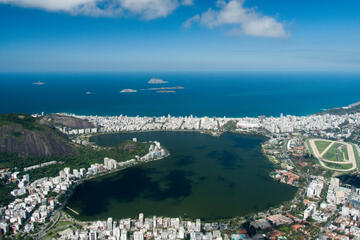
Situated at the heart of Zona Sul and all but completely separated from the Atlantic Ocean by the upscale district of Ipanema, Rodrigo de Freitas Lake has been among Rio's most distinguishing natural landmarks since the city was first established in the 16th century. In the shadow of Corcovado and covering nearly a square mile in surface area, the lagoon lends its name to the adjacent garden district of Lagoa and serves as a recreational area and beauty spot for local residents …
» Ruins Park
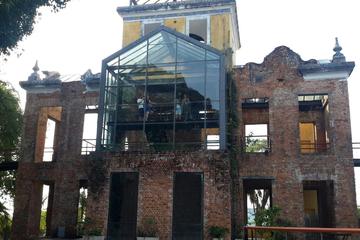
Don't let the name fool you'Ruins Park, or Parque das Ruinas in Portuguese'isn't just some abandoned relic of a bygone era. Well, the venue had been the mansion of a well-known Rio socialite, Laurinda Santos Lobo, whose early 20th-century balls were legendary. After her death in 1946, the house fell into disrepair, only to be salvaged by the city government in the 1990s and turned into this increasingly popular exhibition space and live music venue, complete with an al fresco café and one of the best views in the city …
» BRAZIL • Discover Brazil • Southeast Brazil • Rio de Janeiro





